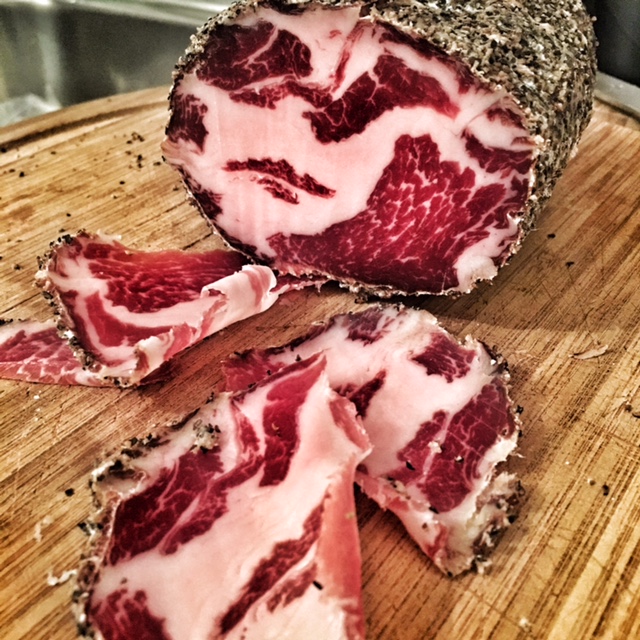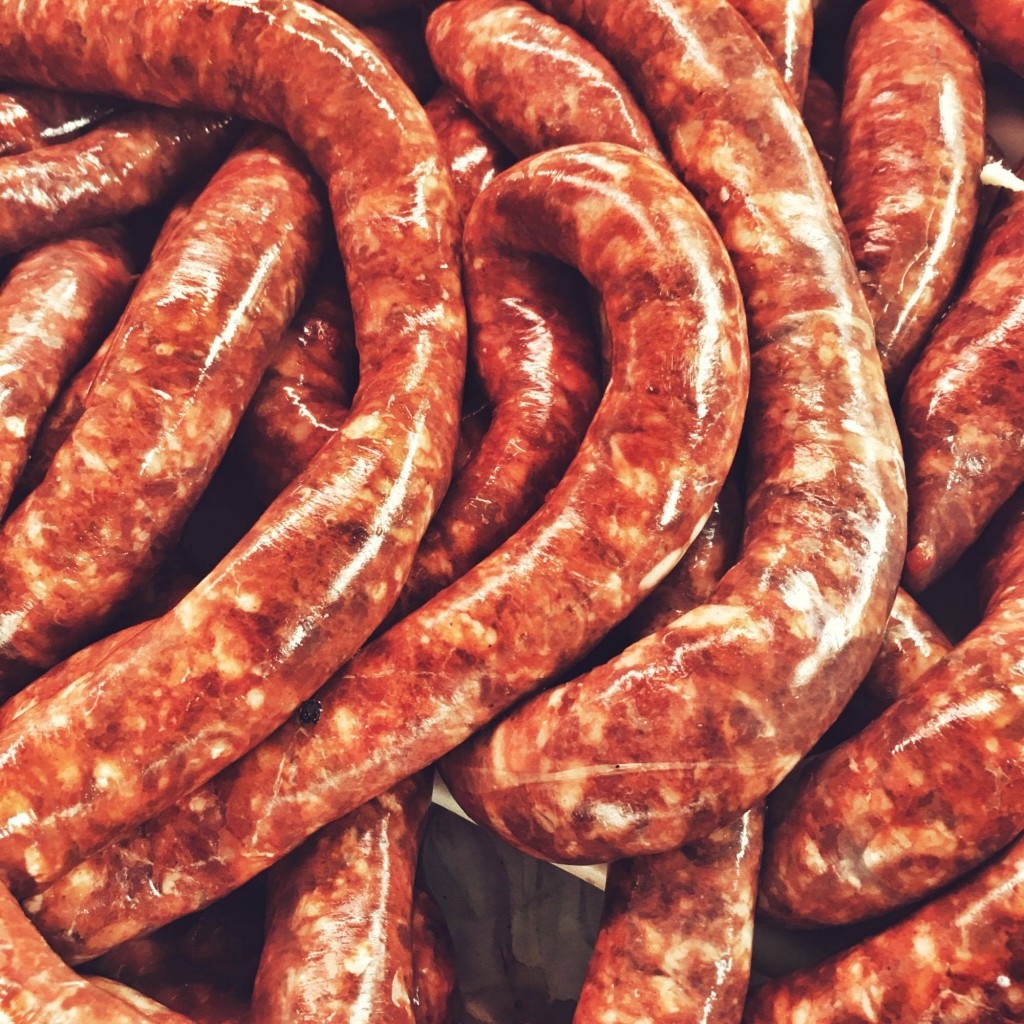By Laura Ewert | WELT Iconist | Berlin | August 2017 | © WorldN24 GmbH. All rights reserved.
The modern butcher blogs and goes on educational journey
At least as beautiful as the meat products from his hands: The blogging butcher Jack Matusek
(Translated from Deutsch)
The butcher is often thick in movies, a bit angry. Sometimes bald. Chabrol rather thick-haired. He is wearing a white apron or white rubber boots and has reddened skin. He saws animals apart and leaves them on large hooks through the slaughterhouse. A place for psychotherapists. Battles are not nice.
Jack Matusek is beautiful. He is wearing a cowboy hat, long brown hair, sometimes green cowboy boots, sometimes a jeans shirt. A soft face. There are many photos of him, because he is a blogging butcher, in English, it sounds as nice as it looks: blogging butcher. He has large pieces of meat in his hand, he shows swine-ear terrines, or how to rouse a whole animal. On his "Raw Republic Meats" page, he writes about his travels, where he wants to learn everything about the craft. The 26-year-old is the proof that even slaughterers can become pop stars today - it helps of course if they look like this.
The slaughterer's new star potential is well explained by the rules of modern gourmets, who eat his bread only artisan and carrots grow blue or crooked. For him, food must be fresh, easily prepared with effort, best self-cultivated. And, of course, ethically correct. This is a tedious business, particularly in meat. One that moves the minds tremendously, in the face of animal protection, in which cow eyes look sadly from truck slits. In the case of conscious eaters, it is, therefore, a good idea to try to find out whether you can kill your food yourself (see the book "Eating Animals"), or at least making a few sausages yourself.
This explains why the butcher is so interested.
“The humble craft of the butcher is definitely coming - worldwide”, says Jack Matusek, who has found his model in Italy. ”I’ve seen videos of Dario Cecchini cutting meat, while he heard AC / DC . I was excited. Then I understood that it was more than cutting meat. It was art. ”
Traveling around the world all over the world
This craftsmanship charmed Matusek. He is a Texan, seventh generation.
“If I could wear my hat in the bed, I would do it, he says. ”
Texas is known for one of the most important economic sectors in the country, the cattle breeding. In 2011 the US produced more than one billion kilos of beef . "I grew up on a ranch. As a child, I enjoyed playing in the kitchen and refined my childish cooking skills, says Matussek. Combining cooking and cattle seemed to me a suitable idea."
At first, he studied history and business administration, where he also developed a business plan for a delicacy butchery. This idea grew more and more in him. "So I canceled the job offers after my graduation and decided to learn everything about the butcher's trade." That was 2015. Since then, he has been on an educational journey with regard to meat.
Jack Matusek first researched, wrote e-mails, and asked at various companies if he could learn from them. He enrolled at the best Fleischer school in the USA, Fleishers Craft Butchery in Brooklyn, New York. Because there was no free place for him, he worked in the next slaughterhouse to learn the basics.
At the same time, he began writing his blog. "I wanted to create a way to teach people about good meat with recipes and video tutorials." That's how you see how he cooks his steak. Directly in the fire. He calls it "Dirty Steak", and the video, in which he explains that you have to leave it four minutes per side in the fire to enjoy it "medium rare" is underlined with action music.
Finally, he moved to Europe. "If you want to learn to surf, go to California, if you want to learn something about sausage, go to France," he had read somewhere. So he sold his car, grabbed his backpack and went to France together with a cowboy hat and a good finish.
Learn from the best butcher
There he worked at the slaughterhouse, on a farm, in a restaurant, ate a lot and learned a lot about French sausages. He spent his 25th birthday at the "Le St. James", a Michelin-starred restaurant in Bordeaux.
Then he went on to Panzano in the Chianti, where he worked with his hero Dario Cecchini, the most famous butcher of Italy. Bill Buford, a New York journalist, was already working as a butcher's assistant. Cecchini sells the self-cut meat in his restaurant "Officina della Bistecca" (Italian for steak workshop).
Matusek then went to France again. In the Gascogne, he was introduced to the secret of national sausage specialties such as Pâté de Tête. He learned how to make the boneless ham Noix de Jambon from a pig's leg, and that any excess blood can cause the meat to rot during drying.
He also studied in Peru, Argentina, and Mexico. "Each country has its own style, which depends above all on local products. But also the climate and the weather influence the way of preparation and storage." A bit like the wine. The Germans, he says, are very exact at slaughter. They would hardly leave meat on the bone. The French cut rather elegantly.
Jack Matusek: "What did the animal eat, how did it live, how was it slaughtered - all that counts for the taste"
Like a cook, a butcher always has his knives, he recommends that of F. Dick. Matusek's favorite sausage specialty is the Italian Coppa of the Schweinenacken. And he loves Hanger steak, the tail of a long bison loin. He likes to work, the boy from the cattle country, but now with pig. "I just know the most about it now." And his favorite vegetable? This is the potato: "So versatile!" The best sausage is made from fresh ingredients, he says. Naturally. He is enthusiastic about Chorizo: "With different types of peppers, smoked, spicy or bittersweet." In addition, only meat from animals, which had grown well.
“What did it eat, how it lived, how it was slaughtered - all that counts ultimately for the taste.”
With extreme vegetarians , he had so far no problems. "Vegetarians love the welfare of the animals, just like me. Animals have to live a happy life, and they have a right to pain-free and decent slaughter. "
Battles, Blogging, and Travel
Matusek is currently working in Denmark, where he is working for a few months. At the end of August, he will come to Germany and look at some pig farms and abattoirs. For the future, he has nothing less than to produce the best sausage specialties in the world. For this, he has to found a company in which he can control everything - from the breeding of the animals through their rearing to their slaughter. "I hope I will return to my ranch in Texas and build an ethically correct slaughter house, with pig farming. And a school for the butchers."
In the meantime, he wants to travel further, to continue writing, to continue learning, to continue, as in Copenhagen at the annual "Butcher's Manifesto Summit". There meet Fleischer from all over the world, to formulate goals for the craft and to exchange ideas about what the world's foodie now calls charcuterie : Superstar meat products.
































